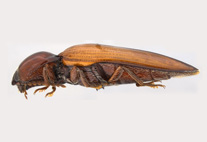Abstract
The family Phytoseiidae includes many species of predators involved in the control of mite pests of crops all over the world. In European vineyards, these natural enemies play a key role in plant protection as their presence usually makes the use of acaricides unnecessary. Each species has its specific biological features. It is thus of great interest to identify the species reported on grape, Vitis vinifera. The present paper, based on a world database of the family Phytoseiidae and on an analysis of more than 250 publications, presents the 54 species of Phytoseiidae belonging to 15 genera reported on V. vinifera in Europe, and identification keys to species. Online versions of the key (dichotomous and polytomous) with illustrations are available at http://www1.montpellier.inra.fr/CBGP/phytoseiidae/sitewebvineyards2/index.htm. An analysis of the biogeographic distribution of these species and their prey has also been carried out. Most species reported on V. vinifera in Europe are rare; only five species are frequently observed: Kampimodromus aberrans, Typhlodromus (Typhlodromus) pyri, Typhlodromus (Typhlodromus) exhilaratus, Euseius finlandicus and Phytoseius finitimus. The 12 countries where Phytoseiidae have been reported from grapes have been unevenly surveyed, the most well-known faunas being from Italy, Greece and France. These species are reported to prey upon the main species of mite pests of grapes.

